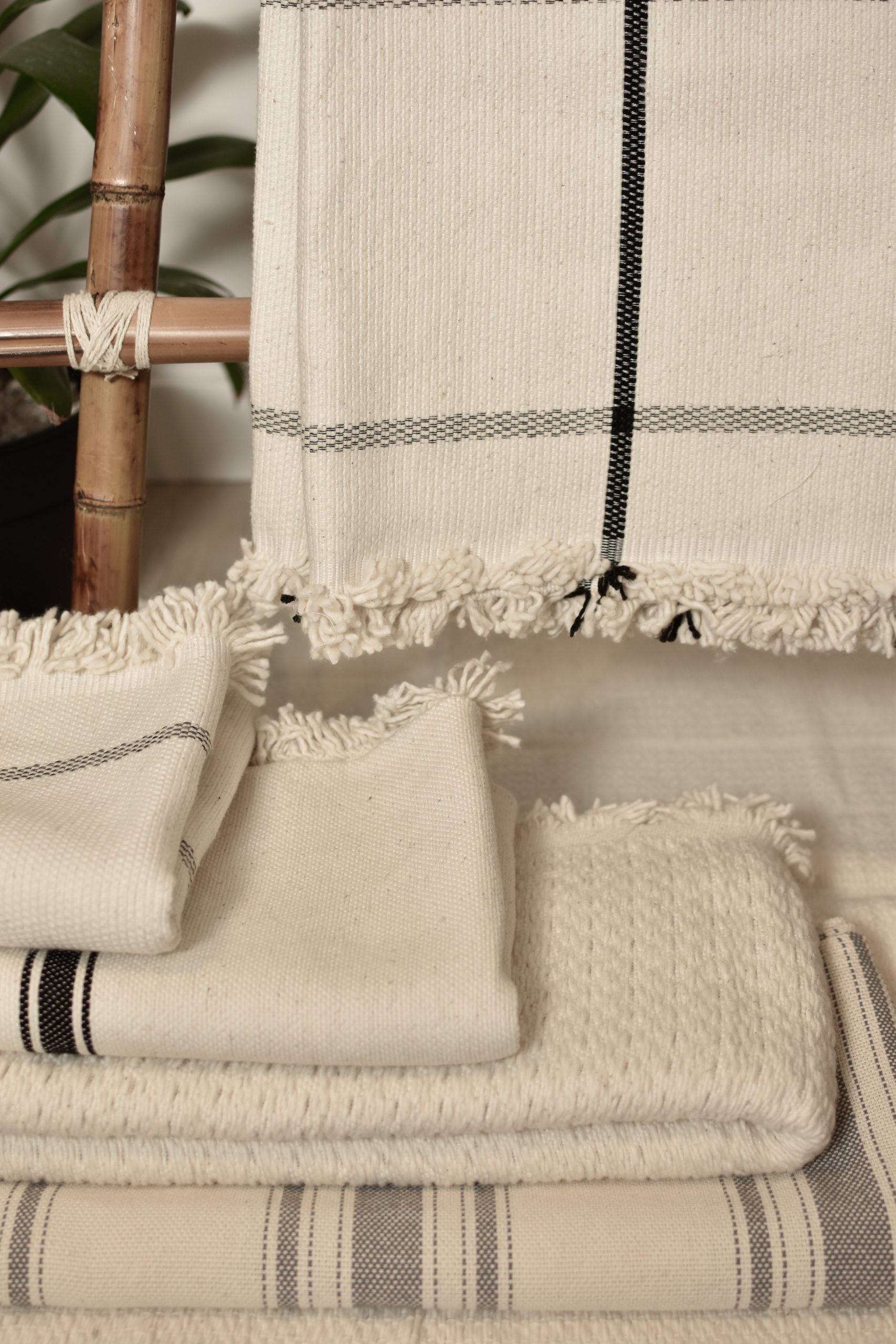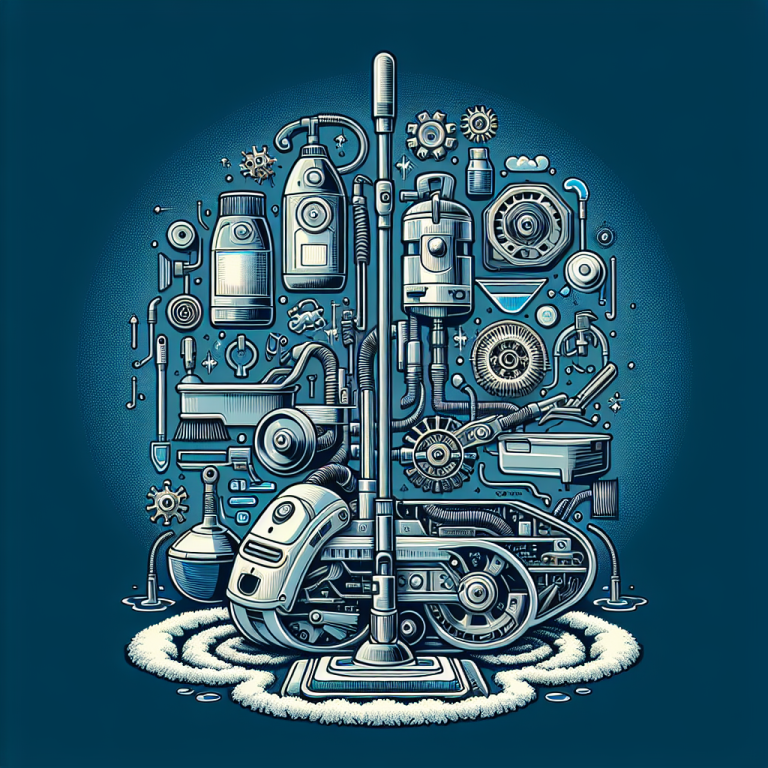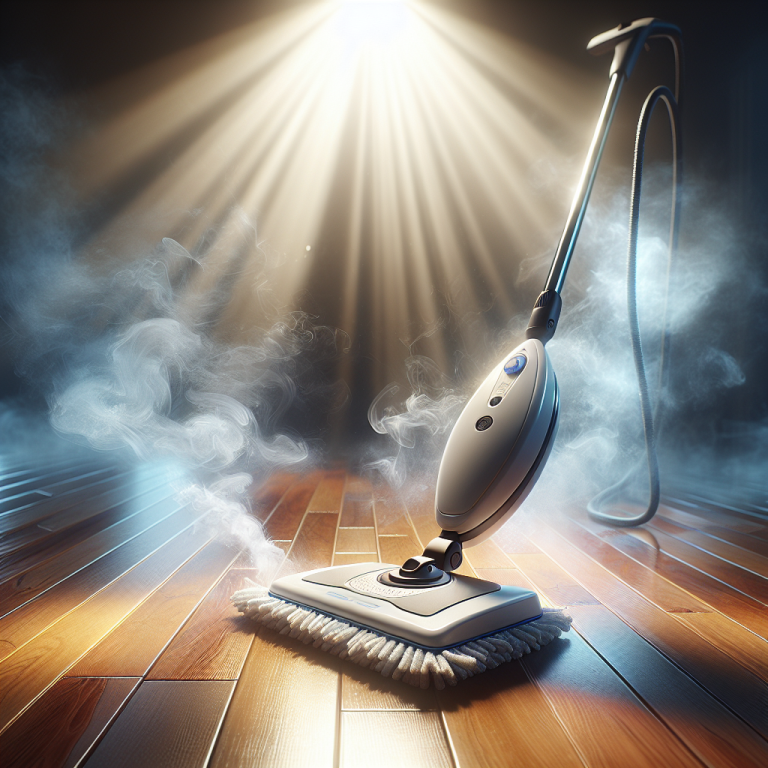How Do I Clean And Maintain My Fabric Steamer?
Taking care of your fabric steamer is essential for its optimal performance and longevity. In this article, we will guide you through the simple steps to efficiently clean and maintain your fabric steamer, ensuring that it continues to steam your clothes flawlessly. From cleaning the water reservoir to descaling the unit, we’ve got you covered. By following these easy maintenance tips, you’ll not only extend the lifespan of your fabric steamer but also guarantee that your clothes are always wrinkle-free and fresh.
Understanding the Importance of Fabric Steamer Maintenance
Why regular cleaning and maintenance is crucial
Regular cleaning and maintenance of your fabric steamer is essential to ensure its optimal performance and longevity. Over time, the buildup of mineral deposits, limescale, and dirt can clog the internal components of the steamer, leading to reduced steam output and even potential damage. By regularly cleaning and maintaining your fabric steamer, you can ensure that it continues to function efficiently and effectively, providing you with crisp, wrinkle-free garments every time.
How maintenance affects the longevity and efficiency of your fabric steamer
Proper maintenance of your fabric steamer directly impacts its longevity and efficiency. Neglecting regular cleaning can result in the accumulation of mineral deposits, which can cause blockages and restrict the flow of steam. This can lead to uneven steam distribution and reduced effectiveness in removing wrinkles from fabrics. Additionally, failing to maintain your fabric steamer may result in a shorter lifespan as the buildup of mineral deposits and limescale can cause damage to internal components, leading to costly repairs or the need for a replacement.
Familiarizing Yourself with Your Fabric Steamer
Before diving into the cleaning and maintenance process, it’s important to familiarize yourself with the various parts of your fabric steamer and understand their functions.
Parts of the fabric steamer
Most fabric steamers consist of a water tank, a steam nozzle, a hose, attachments, and control buttons. The water tank holds the water that is heated to produce steam, while the steam nozzle emits the steam to remove wrinkles. The hose connects the water tank to the steam nozzle, allowing the flow of steam. Attachments, such as brush heads or creaser attachments, can be added for specific fabric treatment. Control buttons allow you to adjust settings and power the steamer on and off.
Identifying what each part does
Understanding the purpose of each part will help you navigate the cleaning and maintenance process more effectively. The water tank holds the water for steam production, while the steam nozzle is responsible for releasing the steam. The hose serves as the conduit for water and steam flow, connecting the water tank to the steam nozzle. Attachments can help with various fabric treatments and conveniently attach to the steam nozzle. Control buttons allow you to control the steamer’s functions, such as adjusting steam intensity or turning it on and off.
Understanding your fabric steamer’s user manual
To ensure you have a comprehensive understanding of your fabric steamer’s specific features and maintenance requirements, it’s important to read and refer to the user manual. This manual provides detailed instructions on how to operate, clean, and maintain your fabric steamer safely. It includes valuable information on recommended cleaning methods, troubleshooting common issues, and important safety precautions. Familiarizing yourself with the user manual will empower you to properly care for your fabric steamer and maximize its lifespan.
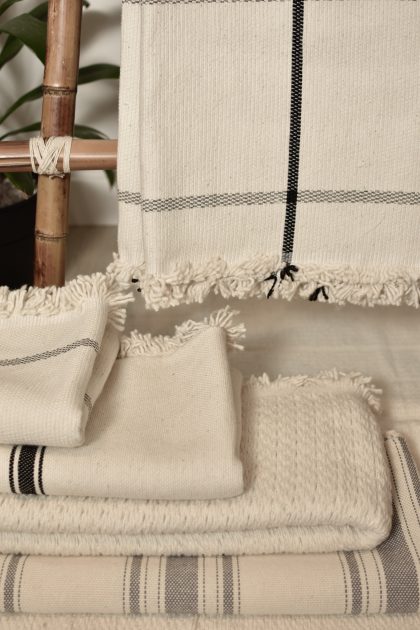
Preparing for the Cleaning Process
Before you begin the cleaning process, it’s crucial to take some safety measures to protect yourself and the fabric steamer from potential harm.
Safety measures before cleaning
First and foremost, ensure that the fabric steamer is unplugged and completely cooled down before starting the cleaning process. This will prevent accidental burns and electrical hazards. Additionally, make sure to clean your fabric steamer in a well-ventilated area to avoid inhaling any cleaning agents. If using any commercial decalcifying agents or cleaning solutions, wear protective gloves and follow the instructions meticulously to prevent skin irritation or chemical exposure.
Gathering necessary cleaning materials
To effectively clean your fabric steamer, gather the necessary cleaning materials. You will need a soft cloth or sponge, mild dishwashing soap, white vinegar, a small brush (such as a toothbrush) for hard-to-reach areas, and clean, lint-free towels or paper towels. These materials will help you remove dirt, grime, and mineral deposits from the exterior and interior components of the fabric steamer.
General Cleaning of the Fabric Steamer
A regular cleaning routine for the external parts of your fabric steamer is crucial to maintain its appearance and performance.
Ways to clean the exterior part of the fabric steamer
To clean the exterior of your fabric steamer, start by wiping it down with a soft cloth or sponge dampened with soapy water (mild dishwashing soap and warm water). Gently scrub the surfaces to remove any dirt, stains, or residue. Avoid using abrasive cleaners or scrubbers that can damage the finish of the fabric steamer. Rinse the cloth or sponge thoroughly and wipe away any soap residue. Finally, dry the exterior surfaces with a clean, lint-free towel to prevent water spots or streaks.
How often should one clean the exterior of a fabric steamer
The frequency of cleaning the exterior of your fabric steamer typically depends on how often you use it. For regular home use, it is recommended to clean the exterior once every two to three weeks. However, if you notice any visible dirt, stains, or buildup, it’s advisable to clean it immediately to prevent further accumulation of grime. Additionally, always wipe down the exterior after using the fabric steamer to remove any steamed water or moisture.

Cleaning the Water Tank
The water tank is a crucial component of your fabric steamer, and regular cleaning is essential to ensure its optimal performance and prevent the buildup of limescale and mineral deposits.
Emptying the tank
Before cleaning the water tank, ensure that the fabric steamer is completely unplugged and cooled down. Carefully remove the water tank by following the instructions in the user manual. Empty any remaining water into a sink or drain. If your fabric steamer has a detachable tank, remove it completely for easier cleaning.
Cleaning residues inside the tank
To remove any residues or mineral deposits inside the tank, prepare a mixture of equal parts white vinegar and water. Fill the tank with this solution, ensuring it covers any areas with visible buildup. Allow the vinegar mixture to sit inside the tank for approximately 30 minutes to loosen the deposits. Next, gently scrub the inside of the tank with a small brush, such as a toothbrush, to remove any loosened residue. Rinse the tank thoroughly with clean water to remove any traces of vinegar.
Drying the tank after cleaning
After cleaning the water tank, it’s important to let it dry completely before reassembling and using the fabric steamer. Leave the tank in a well-ventilated area, or wipe it with a clean, lint-free towel to remove excess moisture. Ensure that no water or moisture remains inside the tank, as this could lead to mold or mildew growth over time. Once the tank is completely dry, reattach it to the fabric steamer according to the user manual instructions.
Decalcifying Your Fabric Steamer
Over time, mineral deposits and limescale can build up inside your fabric steamer, hindering its performance. Decalcifying your fabric steamer removes these deposits and ensures optimal steam output.
Importance of removing limescale and mineral deposit
Limescale and mineral deposits can significantly impact the efficiency and performance of your fabric steamer. These deposits can clog the internal components and hinder the flow of steam, resulting in reduced steam output and uneven distribution. By regularly decalcifying your fabric steamer, you can prevent these deposits from accumulating and maintain the steamer’s effectiveness in removing wrinkles from fabrics.
Simple steps to descale the fabric steamer
To descale your fabric steamer, start by referring to the user manual for any specific instructions or recommended methods from the manufacturer. Generally, a common approach is to fill the water tank with a mixture of equal parts white vinegar and water. Plug in the fabric steamer and allow it to heat up until steam begins to emit. Direct the steam towards a sink or drain to ensure it does not come into contact with any fabrics. Let the steam flow for several minutes to dissolve and dislodge the mineral deposits. Finally, unplug the fabric steamer and rinse the water tank thoroughly with clean water to remove any traces of vinegar.
Commercial decalcifying agents suitable for fabric steamers
If you prefer a commercial decalcifying agent instead of vinegar, ensure it is suitable for fabric steamers. Many manufacturers produce specific descaling solutions designed to effectively remove limescale and mineral deposits without damaging the internal components of fabric steamers. Always refer to the user manual or manufacturer’s recommendations for the appropriate product to use.

Cleaning the Steam Nozzle or Head
The steam nozzle or head is responsible for emitting the steam that removes wrinkles from fabrics. Cleaning this part is crucial to ensure continuous steam flow and prevent any blockages.
Removing dirt and residues from the steam nozzle
To clean the steam nozzle or head, start by unplugging the fabric steamer and allowing it to cool down. Once cooled, dampen a soft cloth or sponge with soapy water and gently wipe the exterior of the steam nozzle to remove any visible dirt or grime. For more stubborn residues, use a small brush, such as a toothbrush, to scrub the surface. Be careful not to scratch or damage the nozzle while cleaning.
Ensuring continuous steam flow
To ensure continuous steam flow, it’s important to check for and remove any blockages within the steam nozzle. If you notice reduced steam output or uneven distribution, you may have a clogged nozzle. Carefully inspect the nozzle for any visible blockages, such as debris or mineral deposits. Use a small brush or pin to dislodge and remove any obstructions, ensuring all steam vents are clear. This will help maintain the steamer’s efficiency and effectiveness in removing wrinkles from fabrics.
Maintaining the Hose and Attachments
Proper maintenance of the hose and attachments is important to ensure optimal performance and prevent damage to your fabric steamer.
Cleaning the hose and other attachments
To clean the hose and attachments, detach them from the fabric steamer according to the user manual instructions. Fill a sink or basin with warm, soapy water and soak the hose and attachments for approximately 20 minutes. Gently scrub the surfaces with a soft brush or cloth to remove any dirt, debris, or residue. Rinse thoroughly with clean water and allow the hose and attachments to air dry completely before reattaching them to the fabric steamer. Periodic cleaning of the hose and attachments will help maintain their functionality and prevent any blockages or malfunctions.
Proper storage to prevent damage
When not in use, it’s important to store your fabric steamer properly to prevent any damage to the hose and attachments. Make sure to detach the hose and any attachments, allowing them to cool down and dry completely before storing. Avoid bending or kinking the hose, as this can restrict the flow of steam. Store the fabric steamer and its accessories in a cool, dry place, away from direct sunlight and excessive heat. By storing the steamer correctly, you can prolong its lifespan and ensure it continues to perform at its best.
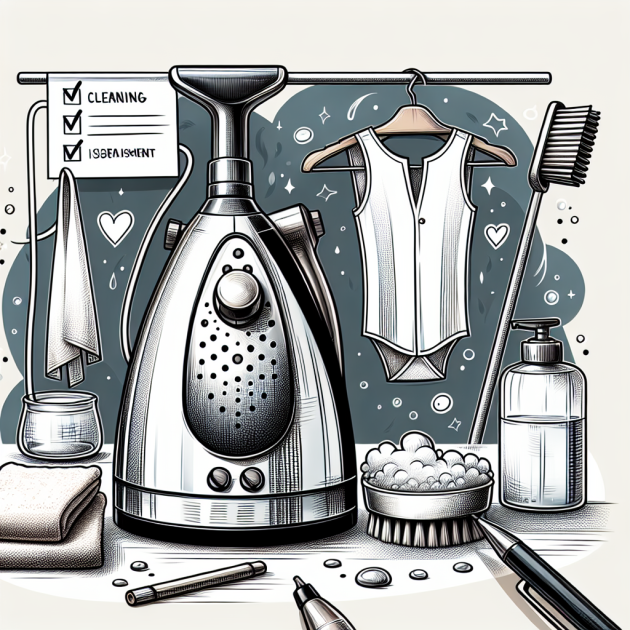
Troubleshooting Common Fabric Steamer Issues
Even with regular maintenance, fabric steamers may encounter some issues along the way. Here are some common problems you may encounter and how to address them:
Dealing with leaking issues
If you notice your fabric steamer leaking during use, there may be a problem with the water tank or the seals. Ensure that the water tank is properly attached, without any loose or damaged parts. Check the seals for any cracks or breakages and replace them if necessary. Additionally, make sure the water tank is not overfilled as this can cause leakage. If the issue persists, refer to the user manual or contact the manufacturer for further assistance.
Addressing inability to produce steam
If your fabric steamer fails to produce steam, several factors could be at play. Check that the water tank is filled with sufficient water and properly attached. Ensure that the fabric steamer is receiving power and the control buttons are set correctly. If these basic checks do not solve the issue, refer to the user manual for troubleshooting tips or contact the manufacturer for assistance. It may be a sign of an internal component malfunction that requires professional repair.
Fixing inconsistent steam production
Inconsistent steam production can be caused by a clogged nozzle or mineral deposits within the fabric steamer. Clean the steam nozzle according to the previously mentioned instructions to remove any blockage. If the issue persists, it may be necessary to decalcify the fabric steamer to eliminate any mineral deposits. If the problem continues, refer to the user manual or contact the manufacturer for further guidance.
Post-Cleaning Maintenance Tips
After completing the cleaning process, it’s important to follow some post-cleaning maintenance tips to keep your fabric steamer in optimal condition.
Proper storage of the fabric steamer
When not in use, store your fabric steamer in a clean, dry area. Avoid storing it in humid environments, as this can encourage mold or mildew growth. Ensure that all parts, including the water tank, hose, and attachments, are completely dry before storing. Proper storage will prevent damage and help maintain the steamer’s functionality over time.
Using distilled or de-mineralized water
To reduce the buildup of mineral deposits and limescale, it is recommended to use distilled or de-mineralized water in your fabric steamer whenever possible. Tap water often contains minerals that can accumulate over time and affect the performance of the steamer. Using purified water will minimize the need for frequent decalcification and enhance the lifespan of your fabric steamer.
Regular check-up and replacement of parts
Periodically inspect your fabric steamer for any signs of wear or damage, such as frayed cords or cracks in the water tank. Schedule regular check-ups to ensure that all components are functioning correctly. If you notice any defective or malfunctioning parts, it is important to replace them promptly. Contact the manufacturer or an authorized service center for genuine replacement parts to maintain the safety and effectiveness of your fabric steamer.
By following these maintenance tips, you can extend the lifespan of your fabric steamer, maximize its performance, and enjoy wrinkle-free clothes with ease. Regular cleaning, proper storage, and attention to any issues will ensure that your fabric steamer remains a valuable tool in your laundry routine for years to come.


